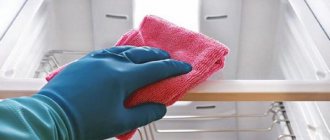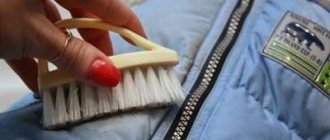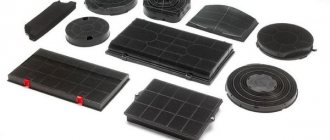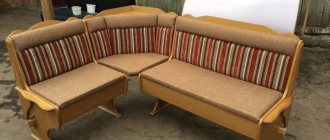If you have become the happy owner of a glossy kitchen set, then you are in luck: the furniture not only pleases the eye, but also visually expands the room and gives a feeling of spaciousness. This is a real find for a small kitchen. Thanks to the ability of gloss to reflect light, the walls seem to move apart and the ceiling becomes higher.
Of course, you will want your furniture to always shine like new. This raises the question: how to wash a glossy kitchen set so that it retains its pristine beauty? We'll talk about this in the article.
Features of a glossy kitchen
As mentioned earlier, the combination of light elements in the kitchen makes it larger and gives the room a special freshness and depth. However, such a kitchen is not suitable for all interiors. So, the kitchen will look out of place in a classic interior due to its lightness.
For modern interior styles, such as hi-tech or minimalism, glossy kitchens are perfect. Depending on the desired interior, darker or lighter panels should be used. In general, such materials tolerate temperature changes well and are moisture resistant, but they require good care.
What to wash and how to clean?
Many housewives clean the MDF facade using regular dishwashing detergents. Usually they do not contain overly aggressive solvents, but on the contrary, the manufacturer adds softening components to the product for the skin of the hands; MDF furniture will also be “pleasant” from such components. It is enough to dilute the detergent in water until foam forms and wipe off drops of grease from the surface immediately. If the dirt is already old, there is another trick - apply foam to these areas and wait a while; dirt and old grease will come off the surface much easier.
Preservation of the glossy facade
In order for the façade to last a long time, it should be looked after frequently and before the material becomes very dirty. To prevent cleaning such a facade, you should wipe the furniture covering with dry wipes. This is done to remove moisture, which over time can damage some of the main elements of the furniture.
To avoid more serious problems, preventative cleaning should be performed more often. It is necessary to periodically wipe the coating with napkins, and once a week you should use a steam cleaner for problem areas or carry out global cleaning on a glossy surface. Thanks to such prevention, the gloss will not lose its shine, and the material will remain just as beautiful for many years.
Toyota Corolla Prestige Plus › Logbook › eliminating scratches on gloss black
I would like to share what and how you can remove scratches on black gloss. Many cars now use this seemingly beautiful, but completely impractical material. I’m not the first owner, and before me, the gearbox cover was pretty worn out and scratched.
Before that, I drove a Mazda 6 2013 and it had the same gloss, which also really liked to scratch.
Apply the paste to a clean surface and rub in quickly and forcefully in a circular motion. Small scratches come off the first time, deeper ones will have to be rubbed longer and the paste applied several times. The procedure must be repeated 2-3 times until deep scratches are removed.
For care - the gloss does not tolerate wiping with a dry cloth. Even with a wet cloth, you should remove the dust very carefully, then wipe with a dry soft cloth, eliminating stains.
As an option, you can coat the surface with varnish. I varnished it with Sikkens varnish. Everything looks like original, but the surface has become more scratch-resistant.
Mileage: 45,000 km
What products should not be used to clean a plastic kitchen?
Certain products are contraindicated for use in such kitchens. Under no circumstances should they be used, as they can cause great harm. Such means are considered:
- Solvents. These materials are highly sensitive to various solvents. Before cleaning the surface with a certain product, you should make sure that the word solvent is not indicated in the composition;
- Nitroglycerine. Doesn't get rid of dirt well, but leaves stains that are difficult to get rid of;
- Alcohol. Liquids containing alcohol destroy the coating and its shine;
- Ammonia. It also belongs to organic solvents, therefore it is not recommended for use;
- Soda and salt. Less dangerous to use, but if used improperly they can cause scratches and destroy the shine of the coating.
Polyvinyl chloride film
She is afraid of everything - high temperatures and humidity, rough mechanical and chemical influences and abrasive additives.
Under no circumstances should PVC film be washed with a very damp cloth.
Also, the formation of cracks and peeling of the film can be caused by:
- Exposure to bright lighting fixtures;
- Temperatures below -15° C.
To prevent the film from peeling off the facade, try to wipe the surface with a not very damp cloth.
How to wash a glossy kitchen set so that there are no streaks
Window and dishwashing detergents will help keep your kitchen shiny and clean without leaving streaks. To do this, you need to foam the product by applying it to the surface of the facade, and then rinse thoroughly.
Without these funds, you can use folk remedies:
- Mix mustard with a little water, apply to the surface and wait a couple of minutes. Then you should wash off the mustard, and with it the stains;
- Grate the soap and dissolve the resulting mixture in water. Then carefully wash with the resulting composition.
If cleaning needs to be done quickly, you can use wet wipes. It is enough to wipe with them the coating on which new dirt has appeared. Wipes remove new stains well and help get rid of the formation of a greasy film. Microfiber cloths are even better for this. They must be moistened with water prematurely, then old stains will be easily removed.
Chic, shine, beauty: do you need to polish?
To ensure that glossy facades continue to shine, polish their surfaces after cleaning .
Choose wax-free polishes. Pay attention to those that contain antistatic agents. Thanks to it you will protect the surface from the accumulation of static electricity. With such a film, dust will be less likely to settle on the headset. Cinderella polishes receive good reviews ; buyers note their high quality and low price.
Products from the brands “Pronto”, “Homestar”, “Mebelux” are popular. The selected product is applied to a pre-cleaned surface with a clean cotton or microfiber cloth. Then they wait for it to dry and carefully rub it in until the shine appears and the streaks disappear.
To polish or not is up to you to decide.
The glossy surface of the furniture has yellowed or faded
Over time, such a headset may lose its original color and acquire a yellowish or greenish tint. This can happen from exposure to sunlight or from the accumulation of grease and other dirt.
In the first case, this happens with low-quality materials used to finish the glossy surface. In this case, household chemicals will not help restore the surface. There are two ways to deal with this problem:
- Carry out grinding and finishing with high-quality film or painting with high-quality enamel;
- The second method is to completely replace the facade elements.
In cases where the cause of color loss was long-term accumulation of fat and soot, you can use the traditional method. Mix vinegar or wood cleaner with water. The proportion should be 1:1. Then you should test the solution on an inconspicuous glossy surface. To do this, add the resulting liquid to a spray container and apply to the stain. Then use a sponge to wipe the spray area in a circular motion. Be sure to use gloves to avoid harm to your hands. If everything is fine after cleaning the glossy surface, you can clean all other areas in the same way. After cleaning, apply a damp sponge to the treated areas and then wipe everything with a dry cloth.
If this method does not allow you to return the original color, you should use a special furniture paste, also having first tested it on a hidden area of the facade.
Painted MDF with varnish
A high-quality multi-layer varnish coating applied over enamel paint does not peel off, does not allow moisture to pass through, and does not fade from bright daylight.
Small defects during use on a painted surface can be corrected, unlike plastic.
The scratched surface can be easily restored. Does not tolerate melamine sponge and high temperatures.
But you still need to try as much as possible to avoid scratches.
Caring for different glossy coatings
Different types of surfaces require different care. There are a number of factors to consider when cleaning each one.
Acrylic
This material is great for the kitchen. However, you need to take proper care of it so that it can last longer. You cannot use various powders, as they can damage the protective film. It is also not recommended to use alcohols and solvents. Hard sponges are also contraindicated for this material. Soapy liquid or special cleaning products are best. In order for the material to retain its appearance longer, it is necessary to polish it once a year.
Plastic
Cheap material, protects well from moisture. It is not recommended to clean with hard sponges, and to use powders and solvents. A non-concentrated cleaning agent or soap solution is suitable for cleaning.
PVC film
Soft sponges or cloths are suitable for cleaning. Wet wipes can be used in any scent to give your kitchen your favorite scent. A couple of times a month it is necessary to carry out general cleaning using glass and mirror cleaning products.
Causes of pollution
Not a single type of kitchen furniture remains free of contamination if they cook there and actively use it. During the cooking process, it is quite difficult to avoid contamination. Most often these are fingerprints, traces of food (grease, water, etc.), the influence of humidity, fumes from the stove and elevated temperature.
There can be many reasons for kitchen furniture to become dirty.
Fever
The glossy surface of furniture is susceptible to temperature exposure if it is located near a stove or column. This has a negative impact on the coverage. Although some manufacturers claim that the material is resistant to elevated temperatures or temperature fluctuations, over time this factor still has an impact on the headset.
Due to constant cooking, the temperature in the kitchen may be too high.
Humidity
This does not mean at all that you cannot do wet cleaning. This means that when wet cleaning, care must be taken in terms of the amount of water. No need to overdo it.
High humidity in the kitchen can have a critical effect on glossy furniture.
Food fumes
Near the stove, liquid evaporates during cooking, creating steam. It will settle on the surface of the glossy material and form condensation, which is excess moisture. Steam traces should be avoided or wiped dry.
Steam from cooking can also damage your kitchen appliances.
Touching fingers
Your fingers have their own sebaceous glands, and when you touch a glossy surface with them, you will leave your imprint there. They can be easily wiped with a damp, alcohol-free cloth and they will disappear. On some surfaces they are very noticeable.
Such fingerprints often remain on any furniture.
Fingerprints
Fingerprints are easily removed and at first glance are completely harmless. But if there is grease on these fingers from cooking or eating food, it will also be on the surface of the kitchen surface.
Finger or palm marks often remain on the surface of all kitchen furniture. Each type of contamination can be removed with a light movement of a napkin or sponge. The main thing in every cleaning is to prevent the formation of old stains, especially greasy ones.
Most stains in the kitchen can be easily removed with a sponge or rag.
Method 1. Express cleaning and polishing for advanced cases (soda + vegetable oil)
PURPOSE: wooden UNpainted kitchens and countertops (coated with matte varnish, oil, wax, polish, any impregnations), varnished and laminated kitchens made of MDF and chipboard, aprons made of any materials.
This recipe is especially helpful if you need to bring an old kitchen or countertop back to life with minimal time and money.
- With its help, you can, firstly, easily remove tightly adhered drops of fat, plaque and stains. Secondly, to “seal” the pores of the wood, protecting it from moisture and dirt. And thirdly, to give the facades a natural shine and brightness. Essentially, this old homemade recipe replaces both cleaner and furniture polish.
CAUTION: Painted wood kitchens and light wood kitchens (oil may yellow slightly).
CLEANING FREQUENCY: It is important that cleaning with soda-oil cleaner is carried out regularly - at least every 2 months. The fact is that oil tends to oxidize and lose its protective properties, possibly changing color.
Step 1. Mix 1.5 tablespoons of baking soda with 1 tablespoon of vegetable oil (you can use more in a ratio of 1.5:1).
Step 2. Apply the resulting “scrub” to contaminated surfaces, paying special attention to cabinets in the stove area. The soda will crumble a little, and the oil will be absorbed like polish. You will see that the tree will become cleaner and a little brighter before your eyes.
Step 3: Wipe treated areas with a clean, damp microfiber or soft cloth.
Step 4. Wipe the remaining cabinets from dust and light dirt with a damp cloth. If necessary, you can treat the entire kitchen with an oil-soda solution.










